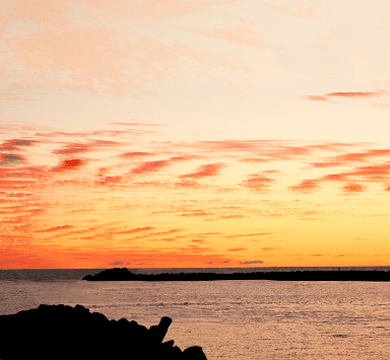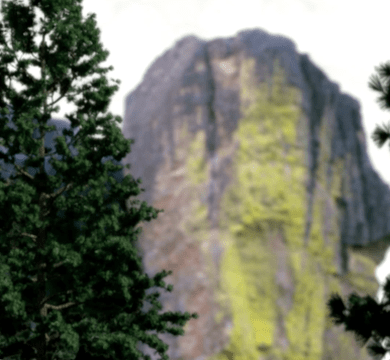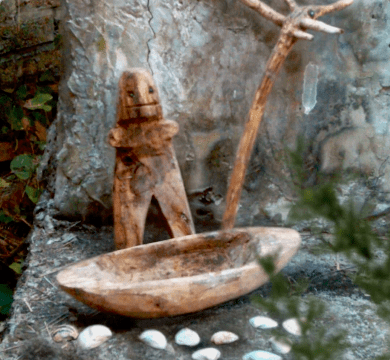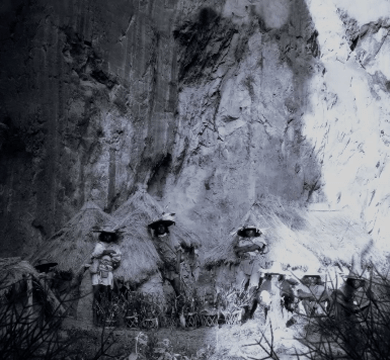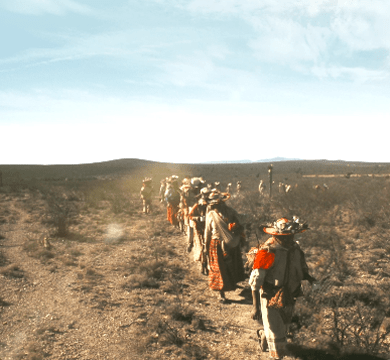Community
The Preservation of Customs
To survive the mythical flood, with the advice of Our Grandmother Takutsi, a man named Watakame made a small boat and climbed into it with a little black dog and five kernels of corn. When the boat ran aground at Chapala, the sacred site of Xapawiyeme “place of Our Mother, the rain fig tree,” the little dog turned into a woman, he married her and planted the corn to create the first cornfield or coamil. And so, he became the first cultivator.
From that time on, the wixaritari or Huichols weave their community ties, building houses and shrines, embroidering cotton or wool, cultivating their ties with maize.
Since the time they are children, Huichols learn and live their customs. So they venerate the mother goddesses of the earth, rain, and corn, who feed them and shelter them.




